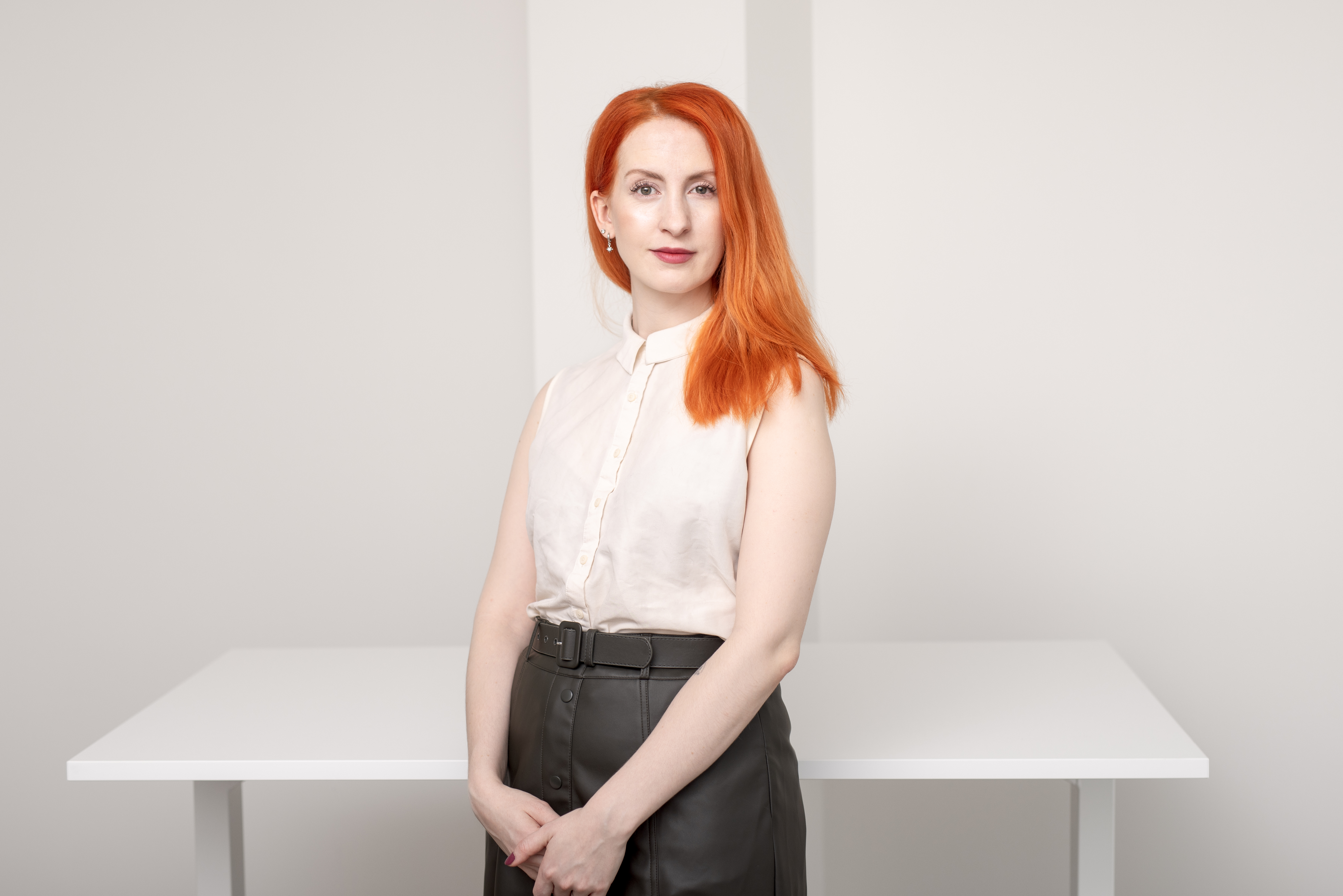OCCO lighting specialist Karin Elisabeth Ruut states that office lighting is something that is not given enough attention, but in fact it is an important part of office design. If, for example, employees in the office often get headaches and experience fatigue, and there is an overwhelming feeling that they would rather work at home, the reason may be precisely because of a poor lighting solution. However, if the lighting is well planned, people feel good to be in the office and work there.
What is a good lighting solution?
The lighting should certainly not interfere with work or cause discomfort. When I have talked to various clients, I have received answers that they do not like working in an office – it is boring, they get headaches and experience fatigue.
People often want to improve the mood of a room by dividing it or changing the chair for a more comfortable one. I have also been told that if, for example, the desk lighting is not suitable, then people turn the lamp off altogether and they think it is better to sit in the dark than in a poorly lit room. Thus, the whole atmosphere starts with lighting – with the right lighting, you can be awake for eight hours and feel good all day long.

How is the OCCO office lighting solution created?
In OCCO’s current office, all desks have individual desk lights that can be adjusted. In addition, the office has large, spacious windows that let in a lot of natural light. We also have a lot of layered lighting, which is also a very important part of the whole solution.
It is important for a person that there are different shades in the room – dark corners where you can relax and brighter places where you can work. If a person is tired, you can use a brighter solution, but if you want to take it easy and relax in the coffee corner, a darker solution is more suitable.
The layering of light is created by different elements – floor lighting, rail lighting, general lighting fixtures and desk lamps. It does not look natural if only one light source fills the room. The more light sources there are at different points, the more comfortable it is to be in the room.
What is being done wrong when creating a lighting solution?
If you create lighting without understanding the properties and effects of different light sources, the lighting can start to disturb. I always start my work with light measurements and calculations. We discuss the dimensions of the room and the light demand there. Through this, we can find out very precisely how many light sources are needed and what is the optimal amount of light. This is determined by the size and characteristics of the room – whether there are low or high ceilings, whether the office building is in a new development or an older building, and how many windows the building has.

When creating an entire office, you need to think about a space as a whole. At OCCO, we work with designers, plan everything from carpets to furniture shades and make sure all the details fit together. That’s how we get a well-thought-out and complete solution.
The biggest problem in designing an office is usually awareness – the customer often has no idea what solutions can be used. If you don’t know what the useful properties of light are, there is no interest in investing in a complete solution. People assume that one light bulb is enough. In fact, you should still trust interior and lighting designers.
People are willing to invest in complete solutions in homes – various light sources are installed and a pleasant environment is created. But in the case of the office, for some reason, you don’t think about it, even though a large part of the day is spent in the office.
How is the situation in Estonia – how much attention is paid to light?
Things are actually starting to get better. On the one hand, we can thank the standards of the European Union, which were created to promote the working well-being of the office. Light calculations have been taken into account and the law stipulates that there must be enough light in the room. Through this, companies have started to pay more attention to lighting and more interest has arisen.
What else can be done to make people understand the importance of light?
I would definitely recommend thinking about what emotions being in the office evokes and what kind of feeling you end the evening with. Do employees prefer to work from home or are they happy to go to the office? It is common that everything starts with lighting. If the world were as I wish, we would play more with light and enjoy it. So that, even during the dark times, one would not feel the urge to flee to Spain as soon as possible, but would get their light-boost at home.




